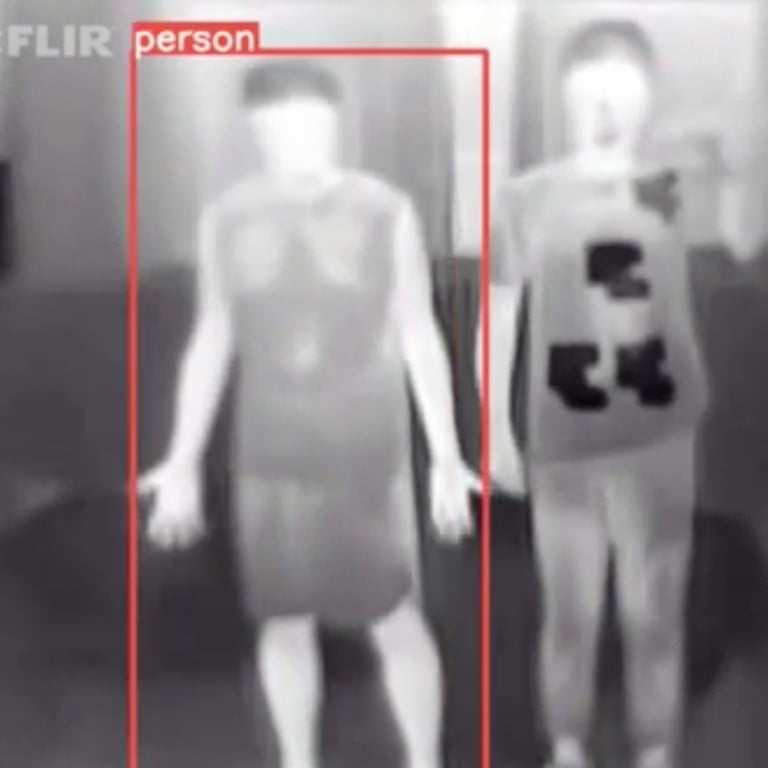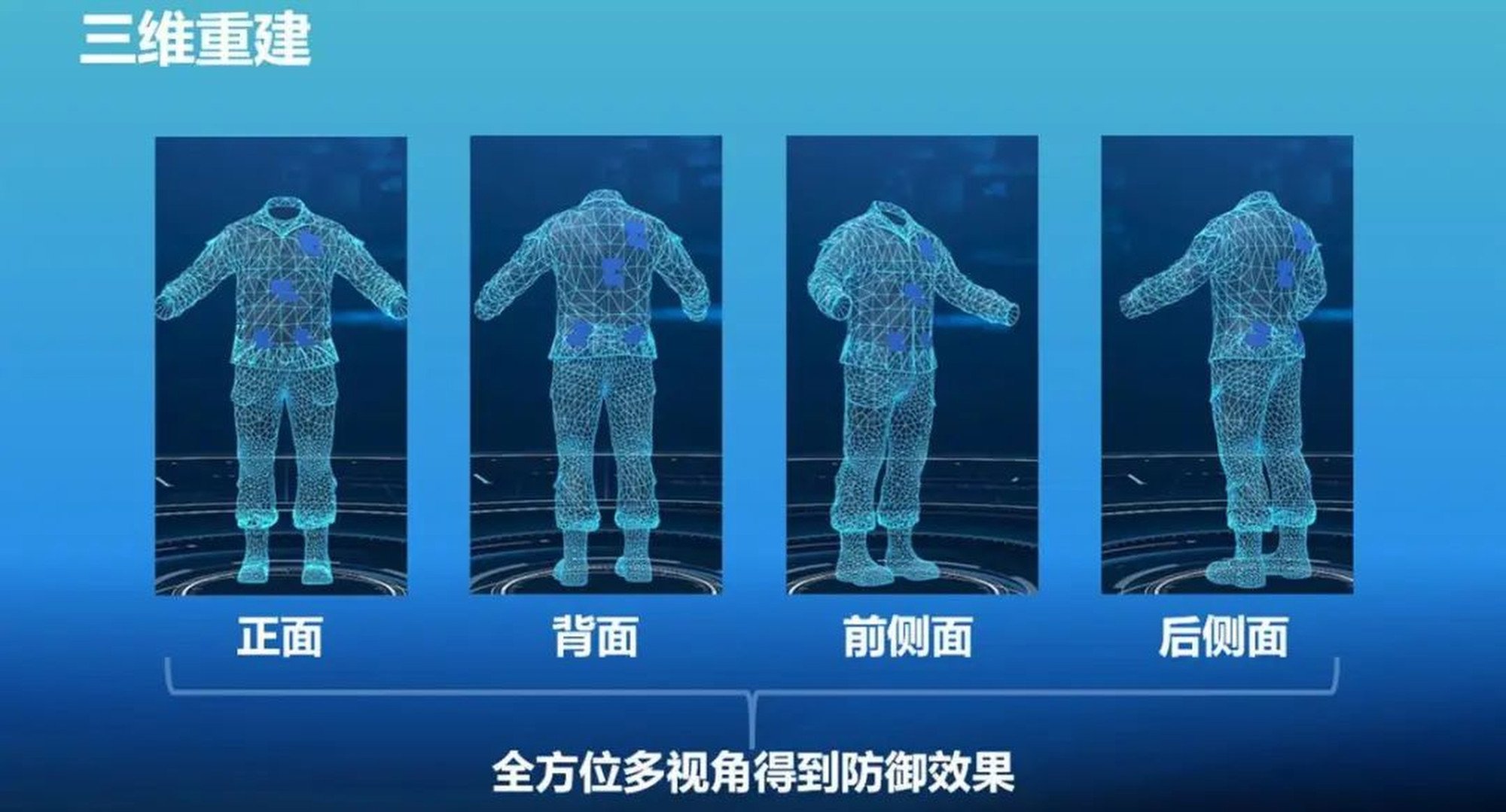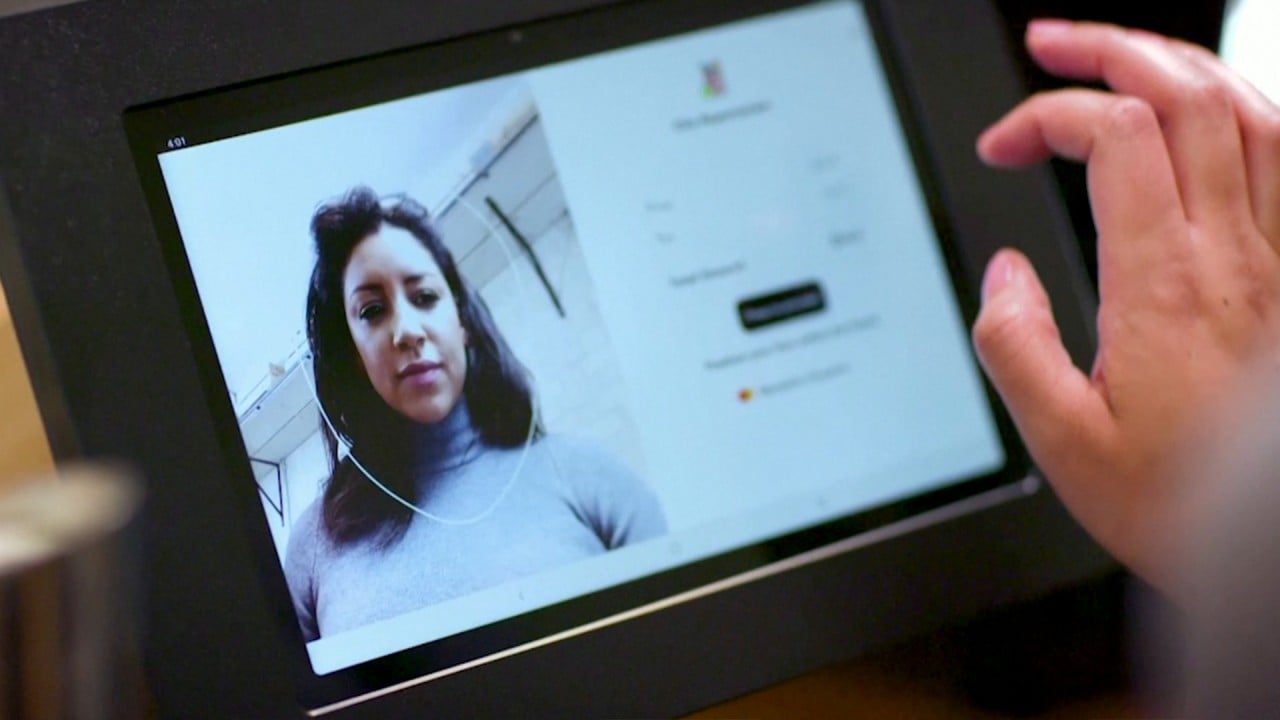
How Chinese students came up with an ‘invisibility cloak’ that evades security cameras
- The InvisDefense coat allows the wearer to be seen but not detected as human, with implications for anti-drone tech and the battlefield
- Team says results shows up loopholes in current AI and recognition technology and developers could use the findings to refine it
The InvisDefense coat can be seen by human eyes but is covered in a pattern that blinds cameras in the day and sends out unusual heat signals at night, according to the team.

“Nowadays, many surveillance devices can detect human bodies. Cameras on the road have pedestrian detection functions and smart cars can identify pedestrians, roads and obstacles. Our InvisDefense allows the camera to capture you, but it cannot tell if you are human,” Wang said.
During the day, cameras often detect human bodies through motion recognition and contour recognition. Bearing a specially designed camouflage pattern on its surface, the InvisDefense can interfere with the recognition algorithm of machine vision, effectively blinding the camera so it cannot identify the wearer as a person.
At night, the camera tracks human bodies through infrared thermal imaging. Irregularly shaped temperature-controlling modules nestled on the inner surface of InvisDefense create an unusual temperature pattern that confuses the infrared camera.
“The most difficult part is the balance of the camouflage pattern. Traditionally, researchers used bright images to interfere with machine vision and it did work. But it stands out to human eyes, making the user even more conspicuous,” said Wei Hui, a PhD student in the team who was responsible for the core algorithm.
“We use algorithms to design the least conspicuous patterns that can disable computer vision.”

The team carried out hundreds of tests over three months before coming up with the best pattern.
Another advantage of InvisDefense is its low cost. Printing a pattern on the surface is relatively cheap, and only four temperature control modules are needed to blind the infrared camera.
“The cost of a complete set of InvisDefense is less than 500 yuan (US$70),” Wang said.
“This is the first product in the industry that can avoid public pedestrian detection and does not arouse suspicion from human eyes. Through campus testing, the accuracy of pedestrian detection can be reduced by 57 per cent – that number could be even higher in the future.
“Our results prove that there are still loopholes in current artificial intelligence technology and computer recognition technology, researchers could use our algorithms to improve current models.
“InvisDefense might also be used in anti-drone combat or human-machine confrontation on the battlefield.”


